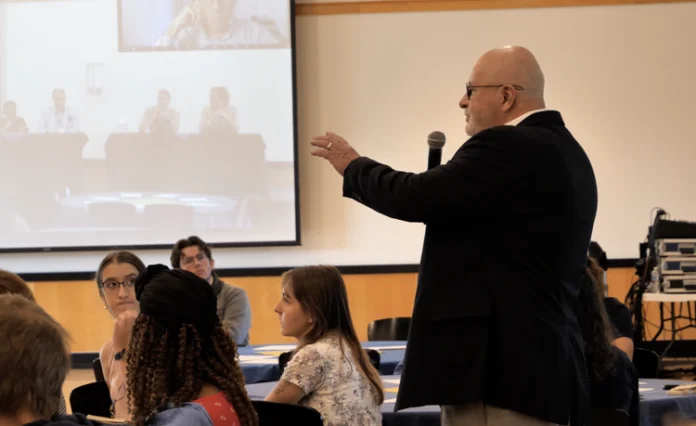Trauma Journalism Symposium examines efforts to identify future school shooters
SEPTEMBER 23, 2024
Ley’s organization, P2P, operates out of Michigan and works to identify adolescents who are at risk for committing acts of targeted mass violence like school shootings. As of Sept. 13, U.S. k-12 schools and colleges had seen 49 shootings in 2024.
Ley said her team first must carry out a behavioral threat assessment to uncover what kind of danger a child may pose to a school or community. After the assessment is completed, P2P makes a plan to manage, monitor and try to send the adolescent on a better path. The organization will also send support teams to schools to help them implement and improve the services, resources and monitoring around these high-risk adolescents.
According to the 2019 U.S. Secret Service Analysis of Targeted School Violence, there is not an exact profile for a school shooter.
“We used to believe that this was a young, white, angry male problem, but it’s not,” Ley said. “The kids have multiple motives, but they usually have a motive, and they usually have a grievance against a classmate or the school entity. Most of the time they use firearms.”
On top of a motive and access to firearms, the Secret Service analysis found that most kids have psychological struggles. Some may have a mental health diagnosis. They also have often been in contact with school disciplinary forces previous to an attack.
Ley stressed the role that ACEs, or adverse childhood experiences, play in the life of a violent child. ACEs could be a traumatic experience at a young age or an early encounter with violence.
Most importantly, Ley covered the topic of prevention. In almost every case of school violence, the student warned someone about their attack before it occurred.
“If they’re communicating these attacks, and they almost always are and almost always do to classmates, it’s a real window of opportunity to avert these attacks,” she said.
Ley said national threat assessments from 2021 reported that most planned attacks are never completed.
“They’re planned for weeks, months, years. Information is almost always leaked,” she said.
The Secret Service and National Threat Assessment Center promote behavioral analysis teams like Ley’s because they play a vital role in identifying and rehabilitating a violent child before they take action, she said.
“There’s almost always intervention points before a student escalates to the degree where they’re going to take action, again because classmates and peers usually know, and we know that behavioral threat assessment teams will help identify these kids,” said Ley.
The two-day symposium featured journalists, mental-health professionals and others discussing the impact difficult stories have on those who tell them. “Trauma journalism” has only recently been recognized, according to the Trust for Trauma Journalism, which says on its website: “To accurately report local or global events, journalists often risk physical and emotional injury from the violence, conflict, and tragedy they cover.”
FOOTNOTE; Anna Cecil is a reporter for TheStatehouseFile.com, a news website powered by Franklin College journalism students.





